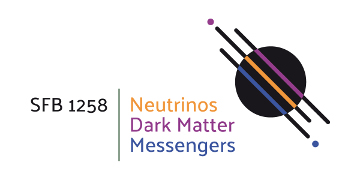In 2018, after more than ten years of observing solar neutrinos, the Borexino experiment presented an overall study of the pp chain, the most important fusion process in the sun. The study confirmed for the first time the theoretical ideas about the energy production in our sun. Recently, after years of efforts, the Borexino collaboration was also able to observe the second fusion process, the CNO cycle. "Both measurements experimentally prove the hypothesis about how the sun works put forward in the 1930s," says Prof. Dr. Stefan Schönert, Chair of Experimental Astroparticle Physics at TUM.
pp chain: from hydrogen to helium
According to this model, around 99 percent of the solar energy results from a chain of fusion reactions that begins with four hydrogen nuclei and ends with the production of helium (proton-proton chain, pp chain). The only direct evidence of this process lies in the observation of the neutrinos that are emitted during these reactions.
Operated in the Gran Sasso underground laboratory
Neutrinos are extremely volatile elementary particles that rarely react with matter and are therefore difficult to measure. In order to shield the experiment from cosmic background radiation, Borexino is operated in the Italian Gran Sasso underground laboratory, which is part of the Italian National Institute for Nuclear Physics (INFN). The original scientific goal of Borexino was to measure neutrinos that are created in the pp chain when 7Be is fused. However, the observation of these low-energy solar neutrinos places high demands on the sensitivity and purity of the experiment.
Sophisticated data analysis
"The key to the success of Borexino was that we managed to almost completely reduce radioactive trace elements in the detector material," says Prof. Lothar Oberauer. “The Borexino collaboration has broken new ground here and achieved an unprecedented level of purity. The remaining background radiation could be identified by using sophisticated data analysis methods."
CNO cycle contributes one percent to the solar energy budget
In this way, since the start in 2007, Borexino has managed to answer questions that went well beyond the initial goal. Most recently, the collaboration succeeded in demonstrating the CNO cycle, that had been proposed by Hans Bethe and Carl Friedrich von Weizsäcker in 1939. About one percent of the solar energy stems from this cycle. "At first I would not have thought it possible that we would ever observe CNO neutrinos with Borexino, since the background signals appeared too high," says Stefan Schönert. Apart from solar neutrinos, Borexino was also able to measure neutrinos from inside the earth and answer questions about the earth's heat balance.
Groundbreaking observations
The European Physical Society now honors the scientists of the Borexino experiment with this year's Giuseppe and Vanna Cocconi Prize for their ‘groundbreaking observations of solar neutrinos from the pp and the CNO chains that provided unique and comprehensive tests of the sun as a nuclear fusion engine' as the committee states. Since 2011, the international prize is awarded every two years for an outstanding contribution to particle astrophysics and cosmology.
Courageous decision to support Borexino
TUM Emeritus Prof. Franz von Feilitzsch, who was one of the experiment’s initiators 30 years ago, is very pleased: “It was a courageous decision by the INFN to support such a challenging experiment on a permanent basis. We had a great cooperation with our European, Russian and American colleagues. The outstanding success of Borexino is not least due to a great number of young scientists.”
The online award ceremony will take place on 26 July 2021 during the high energy physics conference of the European Physical Society.
Information on the Borexino Collaboration
The Borexino team includes 130 scientists from universities and scientific institutions in Italy, France, Germany, Poland, UK, Ukraine, Russia, and the USA. In Germany, the following institutions are involved: Forschungszentrum Jülich, University of Mainz, University of Hamburg and the Technical Universities of Dresden and Munich.
Contact:
Technical University of Munich
Physics Department
Prof. Stefan Schönert
Tel.: +49 89 289 12522
E-Mail: schoenert@ph.tum.de
Prof. Lothar Oberauer
Tel.: +49 89 289 12509
E-Mail: lothar.oberauer@tum.de


